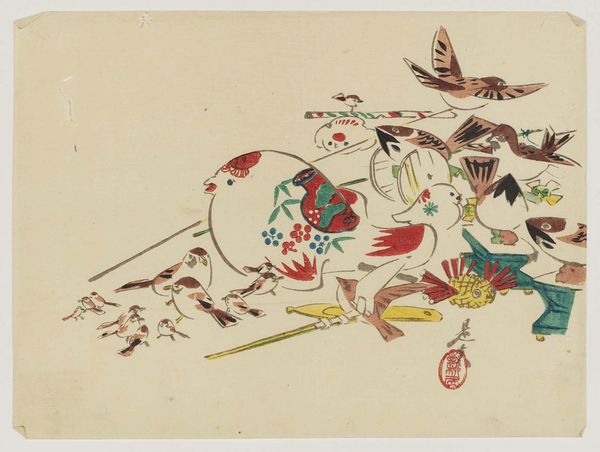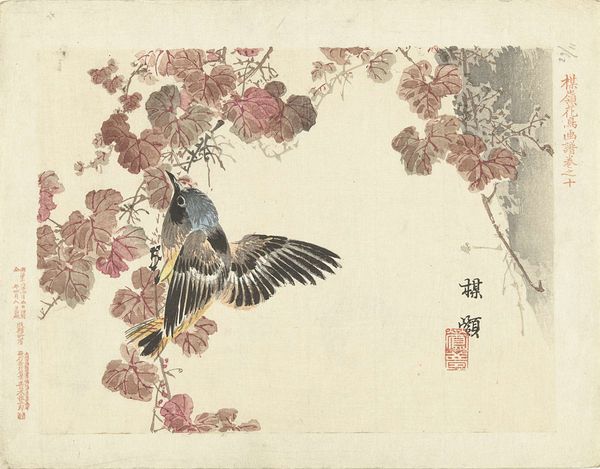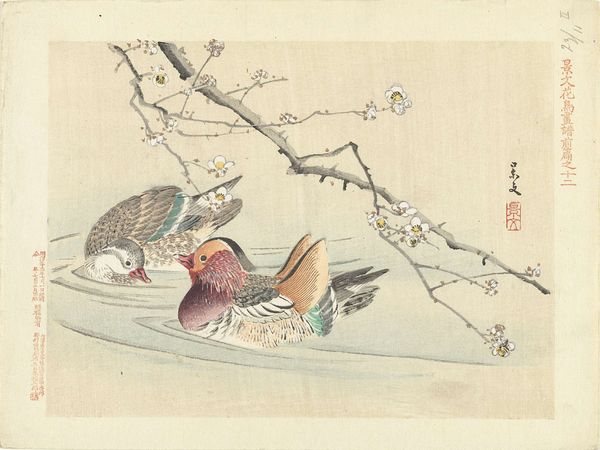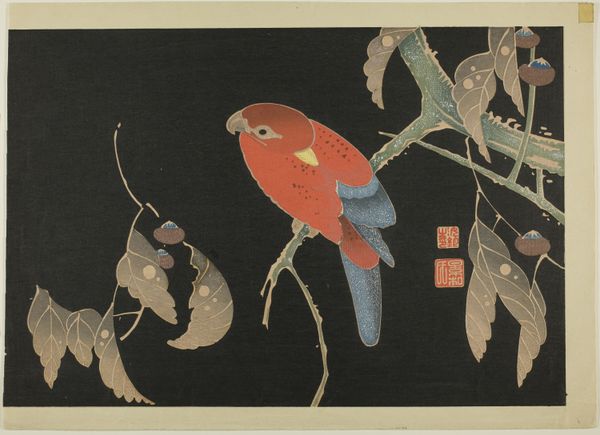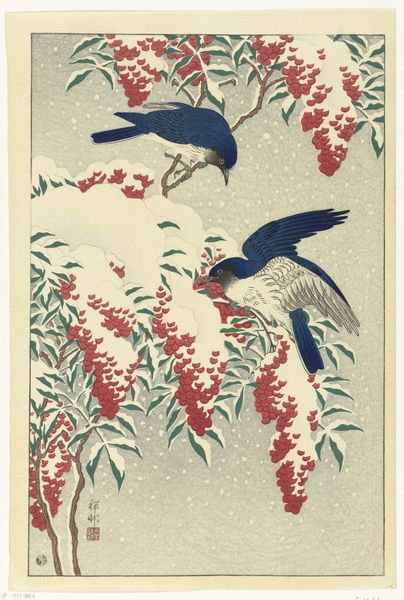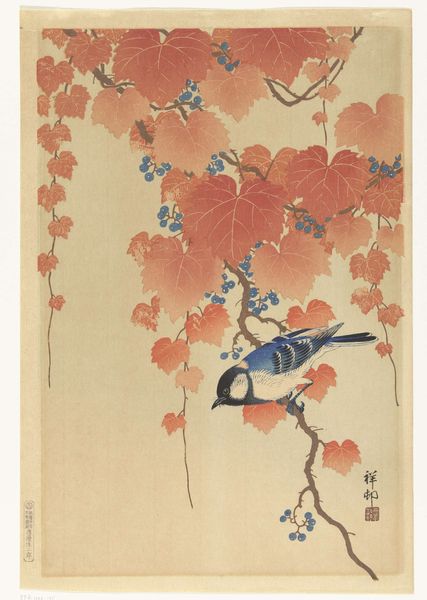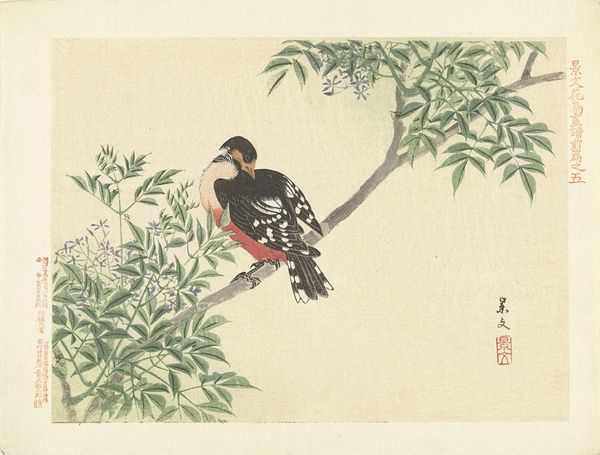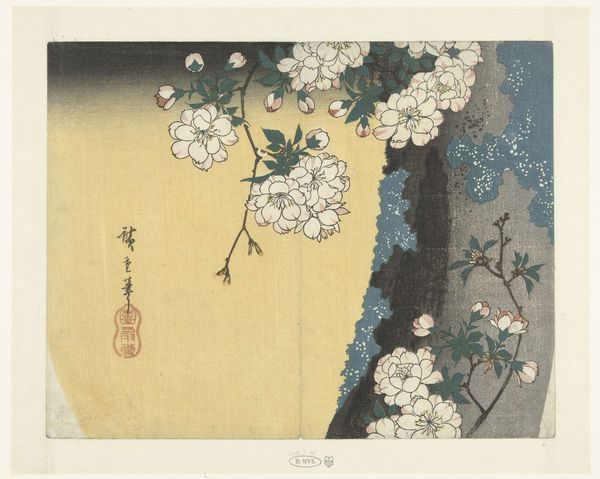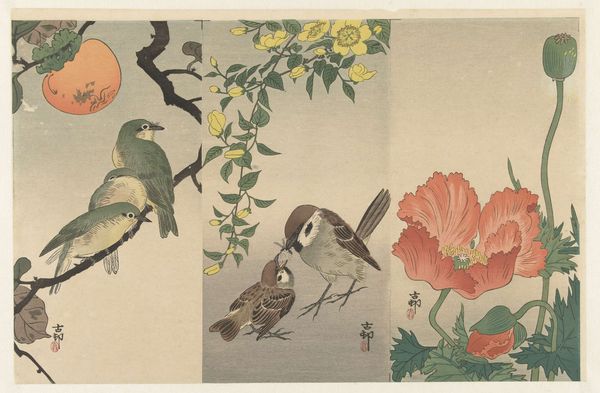
print, ink, woodblock-print
# print
#
asian-art
#
landscape
#
ukiyo-e
#
ink
#
coloured pencil
#
woodblock-print
Dimensions: 8 11/16 × 12 13/16 in. (22 × 32.5 cm) (image, horizontal ōban)
Copyright: Public Domain
Editor: So, this is Hiroshige's "Parrot on a Flowering Plum," a woodblock print from the 1830s. It’s part of the Ukiyo-e tradition, and I'm really drawn to its simplicity, but it's also quite striking with the strong colours. What stands out to you? Curator: Immediately, the plum blossoms seize my attention. Plum blossoms, *ume* in Japanese, often stand for resilience and the coming of spring. Notice how they are depicted even as remnants of winter – a powerful symbol of renewal. But let's not ignore that parrot... What feeling do *you* get from this pairing, this contrast of wild bird and delicate bloom? Editor: Hmm, the parrot does seem a bit out of place, almost like it doesn't quite belong. Is it a symbol for something specific? Curator: That's the interesting tension, isn't it? Parrots, especially then, are exotic imports. Consider this artwork as a type of cultural record; it's holding a moment, one that’s saying something not only about the season, but perhaps even about Japan's place in the world at that time. The parrot represents a foreign element introduced into this traditional, symbolic Japanese landscape. Don't you think it is an invitation to explore cultural interactions, the fusion of familiar and unfamiliar elements? Editor: I see what you mean. So, the plum blossom, a classic Japanese symbol, alongside the parrot creates this interesting dialogue about cultural identity and exchange? It’s like the picture holds a cultural memory of a changing Japan! Curator: Exactly. It’s a single snapshot filled with cultural significance that echoes through time. Editor: That's given me a lot to think about - thank you. It's amazing how much you can unpack from just one image!
Comments
No comments
Be the first to comment and join the conversation on the ultimate creative platform.

